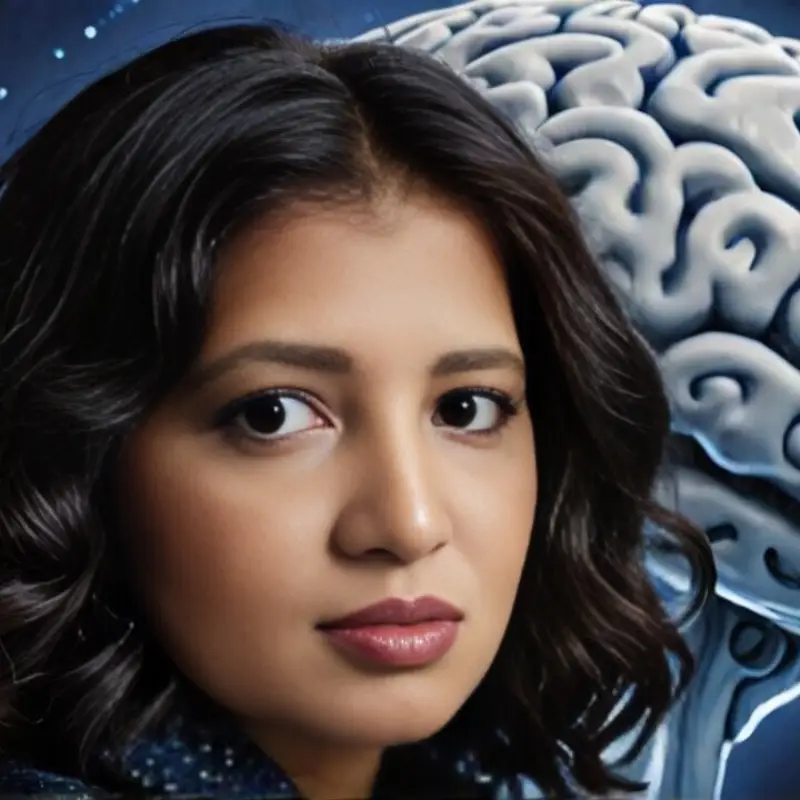Define the concept of emotions in psychology Compare and contrast the James-Lange theory Cannon- bard theory and Schachter-Singer two-factor theory Illustrate your answer with real-life examples
Emotions play a vital role in our daily lives, influencing our decisions, actions, and interactions. But what exactly are emotions, and how do they work? In psychology, emotions are complex reactions that involve both the mind and body, affecting our thoughts, behaviors, and physiological states. To understand emotions better, psychologists have developed several theories. Three well-known theories are the James-Lange theory, the Cannon-Bard theory, and the Schachter-Singer two-factor theory. Let’s explore each of these theories and see how they explain emotions.

Components of Emotion
The subjective experience of emotion is personal and internal, involving how we interpret and feel about an event. This component can vary greatly from person to person, even in response to similar stimuli. The physiological response is the body’s reaction to an emotional trigger, often involving changes in heart rate, breathing, or hormonal activity. Finally, the behavioral or expressive response is how we outwardly display our emotions through facial expressions, body language, or actions.
Emotion Regulation and Emotional Intelligence
Emotion regulation is the ability to manage and respond to our emotions in a healthy and effective way. Emotional intelligence, on the other hand, involves recognizing and understanding our emotions and those of others. It also includes using this awareness to manage behavior and relationships. Both emotion regulation and emotional intelligence are essential skills that contribute to personal and social well-being.
The Role of Emotions in Communication
Emotions are integral to communication, often conveying more than words alone. Facial expressions, tone of voice, and body language all provide cues about our emotional state to others, helping them understand our reactions and intentions. This nonverbal communication is crucial in building and maintaining relationships, as it fosters empathy and connection.
The James-Lange Theory of Emotion
The James-Lange theory, proposed by William James and Carl Lange, suggests that emotions occur as a result of physiological reactions to events. According to this theory, we perceive a stimulus, our body reacts, and then we experience an emotion. For example, if you encounter a barking dog, your heart might start racing, and then you feel fear as a result of these physiological changes.
The Sequential Process
The James-Lange theory emphasizes a sequential process where the body’s response to a stimulus occurs first. This physical change is then interpreted by the brain as a specific emotion. This approach suggests that without the physiological reaction, the emotional experience would not occur.
Real-Life Example
Imagine you’re walking in the woods, and you see a snake. According to the James-Lange theory, you first notice the snake, your body starts to tremble, and then you interpret these bodily changes as fear. This sequence demonstrates how physical reactions are foundational to emotional experiences according to this theory.
Criticisms and Limitations
While the James-Lange theory provides insight into the connection between physical responses and emotions, it has been critiqued for oversimplifying emotional experiences. Critics argue that this theory doesn’t account for the complexity of emotions or explain situations where emotions occur without distinct physiological changes.
The Cannon-Bard Theory of Emotion
Walter Cannon and Philip Bard challenged the James-Lange theory by proposing that emotions and physiological reactions occur simultaneously, not sequentially. According to the Cannon-Bard theory, when we encounter a stimulus, our brain sends signals that trigger both the emotional experience and physiological reactions at the same time.
Simultaneous Reaction
The Cannon-Bard theory posits that the thalamus plays a central role in processing emotions. Upon perceiving a stimulus, the thalamus sends simultaneous signals to the brain’s cortex, which produces the emotional experience, and to the autonomic nervous system, which triggers the physiological response. This simultaneous reaction ensures that emotions are experienced rapidly and efficiently.
Real-Life Example
Using the same scenario of encountering a snake in the woods, the Cannon-Bard theory would suggest that you see the snake, and simultaneously, your brain causes you to feel fear and your body to react (trembling, heart racing). This theory highlights the brain’s role in coordinating emotional and physical responses.
Advantages and Challenges
The Cannon-Bard theory addresses some limitations of the James-Lange theory by accounting for the brain’s role in emotions. However, it has been critiqued for not fully explaining how cognitive factors influence emotional experiences. While simultaneous processing is plausible, it doesn’t detail how different emotions are distinguished.
The Schachter-Singer Two-Factor Theory of Emotion
The Schachter-Singer two-factor theory, also known as the cognitive arousal theory, posits that emotion is based on two factors: physiological arousal and cognitive interpretation of that arousal. According to this theory, an emotional experience requires both the physical arousal and a cognitive label that interprets the cause of that arousal.
Cognitive Labeling
The Schachter-Singer theory emphasizes the importance of cognitive processes in interpreting emotions. After a physiological reaction occurs, the brain assesses the context and assigns a label to the arousal. This cognitive labeling is crucial for distinguishing between emotions that might share similar physical symptoms.
Real-Life Example
Consider a situation where you’re about to give a public speech. Your heart starts pounding, and you feel jittery. According to the Schachter-Singer theory, you label your physiological arousal as anxiety because of the context (giving a speech), leading you to experience the emotion of fear. This illustrates how context and interpretation shape emotional experiences.
Implications and Critiques
The Schachter-Singer theory provides a nuanced view of emotions by integrating cognitive appraisal with physical arousal. It acknowledges that emotions are not purely physiological but are also influenced by situational factors. However, critics argue that the theory may not fully account for emotions that arise without conscious interpretation.
Comparing and Contrasting the Theories
Each of these theories offers a unique perspective on how emotions arise, but they also share some commonalities.
Similarities
- All three theories acknowledge that emotions involve physiological responses.
- They agree that emotions are reactions to external stimuli.
- Each theory highlights the importance of both mind and body in experiencing emotions.
Differences
- The James-Lange theory emphasizes a sequential process, where physiological changes precede emotional experiences.
- The Cannon-Bard theory argues for simultaneous emotion and physiological response.
- The Schachter-Singer theory requires a cognitive interpretation to label the emotion, combining both physiological arousal and situational context.
Integrative Perspectives
While each theory presents distinct ideas, they collectively contribute to a broader understanding of emotions. Psychologists often integrate elements from multiple theories to explain complex emotional experiences. This integrative approach acknowledges that emotions are multifaceted and influenced by a combination of physiological, cognitive, and situational factors.
Practical Applications
Understanding these theories can improve how we manage emotions in our daily lives. For example, recognizing the role of cognitive labeling in the Schachter-Singer theory can help us reframe negative experiences, reducing stress and anxiety. Improving emotional intelligence by understanding these mechanisms can enhance personal relationships and professional interactions.
Emotion Regulation Techniques
- Mindfulness: Being present in the moment helps in recognizing and managing emotions. This practice encourages awareness of emotional triggers and responses, allowing for more controlled reactions.
- Cognitive Reappraisal: Changing the way we interpret a situation can alter our emotional response. By reframing negative thoughts, we can reduce emotional distress and enhance resilience.
- Breathing Exercises: Controlling our breath can reduce physiological arousal and help us remain calm. This technique is particularly useful in managing anxiety and stress, promoting relaxation and emotional stability.
Enhancing Emotional Intelligence
Developing emotional intelligence involves honing skills such as empathy, self-awareness, and emotional regulation. By understanding the theories of emotion, individuals can better navigate their own emotions and those of others. This skill set is invaluable in personal relationships, workplace dynamics, and overall well-being.
Application in Therapy and Counseling
Therapists and counselors often draw on these theories to help clients understand and manage their emotions. By exploring the physiological, cognitive, and situational aspects of emotions, clients can gain insights into their emotional patterns. This understanding can lead to more effective coping strategies and improved mental health.
Conclusion
Emotions are complex and multifaceted, involving both physiological and cognitive components. The James-Lange, Cannon-Bard, and Schachter-Singer theories each provide valuable insights into how emotions function. By understanding these theories, we can develop better emotion regulation strategies and improve our emotional intelligence, leading to healthier and more fulfilling lives. Whether it’s managing stress, improving relationships, or enhancing decision-making, a deeper understanding of emotions is key to personal and social well-being.
Future Directions in Emotion Research
As our understanding of emotions continues to evolve, future research may further integrate these theories with new insights from neuroscience and psychology. This ongoing exploration promises to deepen our comprehension of emotions and their impact on human behavior. By staying informed about these developments, individuals and professionals can continue to apply this knowledge to enhance emotional health and well-being.
